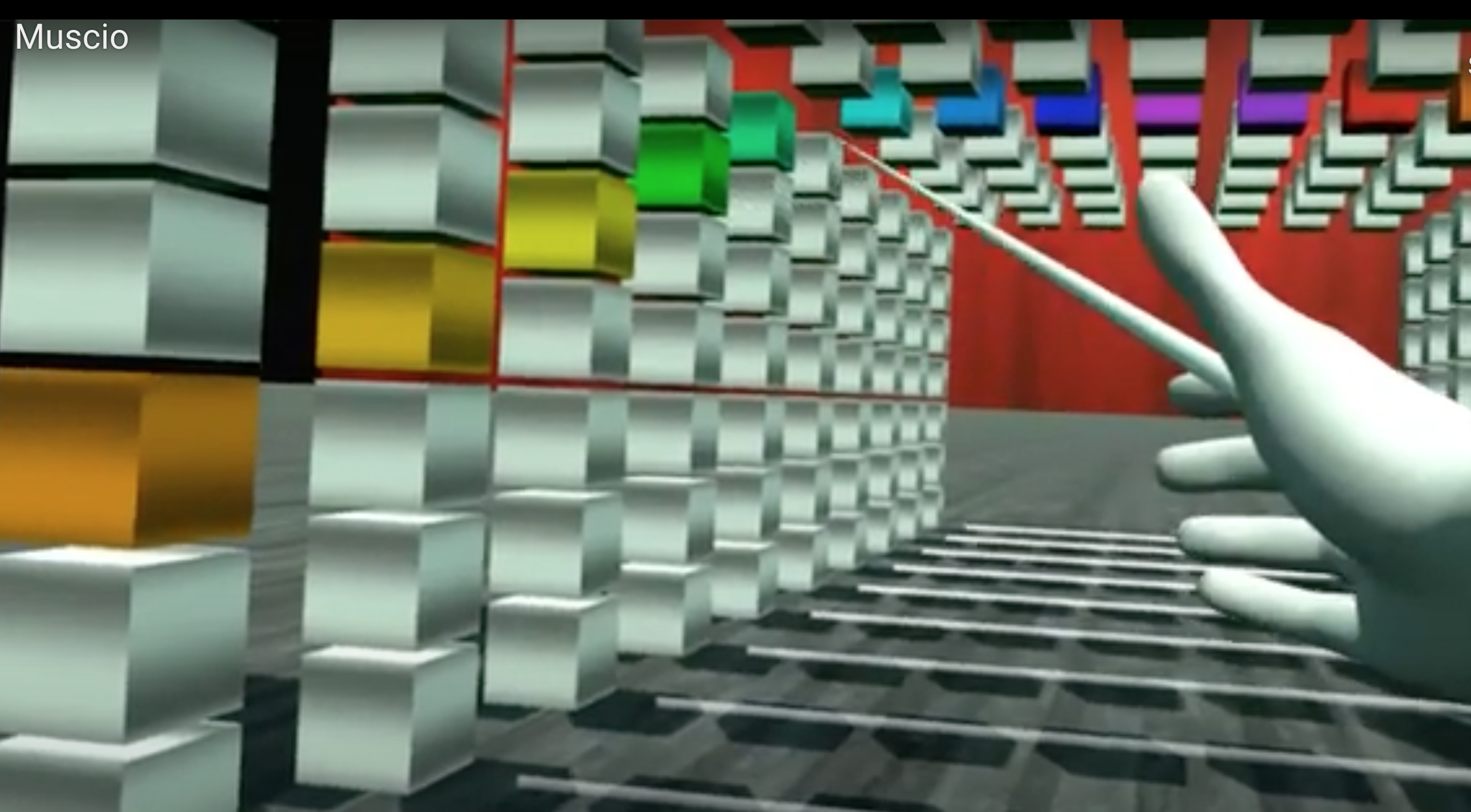Muscio
UCSD CSE: 3D User Interaction (CSE 165), Final Project
Technologies Used? Unity3D, Oculus Rift (VR), MuseScore
Skills Used? Interaction Design (IxD), UI/UX Design, Software Engineering, C# Programming, Music, Futurist Mindset, Imagination
People Involved? Teammate: Ryan Cajigal; Professor: Jurgen Schulze
When? March 2019
For the final project in CSE 165, I teamed up with my friend Ryan Cajigal to create a project that would allow users to compose music in a new, spatial way; at the time, I had no idea that this project would inspire a theme in my future creative works! (I am writing about this project years later, after I also created an AR app for spatial music experiences and another VR app for music composition.)
Anyway, our main goal wasn’t to create a new method of composition just for the sake of challenging traditional methods. Our true aim was create a composition tool that would allow even someone who knew nothing at all to be able to create a song. With that objective in mind, we decided to create a simple tunnel structure that users could alter by “painting” the blocks around them with different colors. A more interesting and unusual feature of Muscio compositions comes from the use of Unity’s built-in audio spatialization; this means that sounds really are directional, so users can experiment with the effects not only of different note combinations, but of varying note placements as well. For example, maybe a certain gate sounds best if the left half is all C, while the right half is all E…or maybe it would sound better if these notes were placed in an alternating pattern! Or what about the effects of setting all the top blocks to C, the left blocks to E, and the right blocks to G — then setting the next gate to a different spatial orientation of these notes? This spatial element introduces another dimension that inspires even the most advanced composers to rethink their musical practices and express new facets of their creativity.
The last noteworthy feature is the ability to save and reload a song; we thought that was pretty neat! In the future, we would of course like to add the ability to choose from multiple different songs to import (between tests, we just changed the path in the Unity Inspector), as well as the ability to export multiple songs in one session (we were writing to a hard-coded file). We also wanted to add many more controls for customizing the structure of the tunnel!
In short, despite its limitations, I think Muscio is pretty cool, and I’m really grateful to Ryan for going along with an idea that seemed kind of out there. We received a lot of praise and intrigue in our project from our classmates and attendees of the CSE 165 showcase, and its thanks to the excitement that was generated at that time — as well as the very positive and fun design and development experience we had — that I ended up becoming someone who is known to certain audiences as the Musical XR gal.
My only regret about this project is that I didn’t save a video anywhere other than my UCSD drive account, to which I no longer have access. I’ll just have to recreate the project someday! :)


